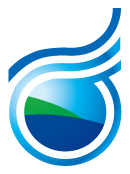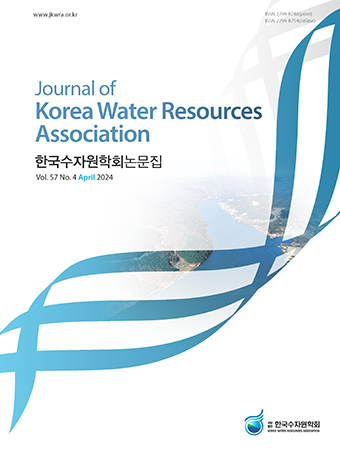Abstract
References
Abou-Seida, M. M., and Saleh, M. (1987). “Design of stable alluvial channel.” Journal of Hydraulic Research, Vol. 25, No. 4, pp. 433-446. Ackers, P., and White, W. R. (1973). “Sediment transport: a new approach and analysis.” Journal of Hydraulics Division, ASCE, Vol. 99, No. 11, pp. 2041-2060. Afzalimehr, H., Heidarpour, M., and Farshi, S. H. (2003). “Resistance to flow in gravel-bed rivers.” Journal of Science and Technology of Agriculure and Natural Resources, Vol. 7, No. 1, pp. 19-31. Andrews, E. D. (1980). “Effective and bankfull discharges of streams in the Yampa river basin, Colorado and Wyoming.” Journal of Hydrology, Vol. 46, No. 3-4, pp. 311-330. Brownlie, W. R. (1981). Prediction of flow depth and sediment transport in open channels. California Institute of Technology, Pasadena, California, Report No. KH-R-43A, November, pp. 230. Colby, B. R., and Hembree, C. H. (1955). Computations of total sediment discharge, Niobrara river near Cody, Nebraska. U.S. Geological Survey. Copeland, R. R. (1994). Application of channel stability methods - case studies. Technical Report HL-94-11, September, United States Army Corps of Engineers, Waterways Experiment Station, Vicksburg, Mississippi. Copeland, R. R., Sora, P., and Thorne, C. (2005). “Channel-forming discharge and hydraulic geometry width predictors in mean-dering sand-bed rivers.” Proceedings of World Water and Environmental Resources Congress, ASCE, Reston, Virginia, pp. 1-12. Engelund, F., and Hansen, E. E. (1967). “A monograph of sediment transport in alluvial rivers.” Technical University of Denmark, Copenhagen, p. 62. Griffiths, G. A. (1983). “Stable-channel design in alluvial rivers.” Journal of Hydrology, Vol. 65, No. 4, pp. 259-270. Jang, E. K. (2012). Analysis of channel-forming discharge calculation and channel section evaluation for stable channel design. M. S. thesis, University of Myongji, Korea (in Korean). Jang, E. K., Ji, U., Kim, G. H., and Yeo, W. K. (2016). “Stable channel design with different sediment transport equations and geomorphologic constraints in Cheongmi stream.” Journal of Korea Society of Civil Engineers, Vol. 20, No. 5, pp. 2041-2049. Jeong, W. J., and Ji, U. (2014). “Stable sensitivity analysis and parameter evaluation of a distributed model for rainfall-runoff- soil erosion-sediment transport modeling in the Naesung stream watershed.” Journal of Korea Water Resources Association, Vol. 47, No. 12, pp. 1121-1134. Ji, U., and Jang, E. K. (2015). “Stable channel design for the gravel-bed river considering design constraints.” Journal of the Academia-Industrial, Vol. 16, No. 4, pp. 2860-2867. Ji, U., Jang, E. K., and Lee, C. J. (2015). “Numerical analysis for bed changes at the meandering stream due to a short term flood event.” Journal of the Korean Society of Civil Engineers, Vol. 35, No. 6, pp. 1229-1236. Ji, U., Jang, E. K., and Yeo, W. K. (2011). “Channel-forming discharge evaluation for rivers with high coefficients of river regime.” Journal of Korea Society of Civil Engineers, Vol. 31, No. 4B, pp. 361-367. Ji, U., Julien, P. Y., Kang, J. U., and Yeo, H. K. (2010). “Stable channel analysis and design for the abandoned channel restoration site of Cheongmi stream using regime theory.” Journal of Korea Society of Civil Engineers, Vol. 30, No. 3B, pp. 305-313. Ji, U., Velleux, M., Julien, P. Y., and Hwang, M. (2014). “Risk assessment of watershed erosion at Naesung stream, South Korea.” Journal of Environmental Management, Vol. 136, pp. 16-26. KICT (2013). Analysis of change in river morphology and vegetation due to artificial structures. Internal Research Project, Korea Institute of Civil Engineering and Building Technology, KICT 2013-221 (in Korean). KICT (2016). Analysis of change in river morphology and vegetation due to artificial structures. Internal Research Project, Korea Institute of Civil Engineering and Building Technology, KICT 2016-187 (in Korean). Kim, Y. J., and Lee, C. J. (2014). “Analysis on channel change of the Naesung river -before the Youngju dam impoundment (1970~2011)-.” Journal of the Korean Geomorphological Association, Vol. 21, No. 1, pp. 17-31. Leopold, L. B., Wolman, M. G., and Miller, J. P. (1964). Fluvial processes in geomorphology. W. H. Freeman and Company. Meyer-Peter, E., and Müller, R. (1948). “Formulas for bed-load Transport.” Proceedings of the 2nd Meeting of the International Association for Hydraulic International Association of Hydraulic Research Delft, Sweden, pp. 39-64. Patel, M., Deshpande, V., and Kumar, B. (2015). “Turbulent characteristics and evolution of sheet flow in an alluvial channel with downward seepage.” Geomorphology, Vol. 248, pp. 161-171. Raff, D. A., Bledsoe, B. P., and Flores, A. N. (2004). GeoTool user’s manual. Colorado State University. Shields, F. D., Copeland, R. R., Klingeman, P. C., Doyle, M. W., and Simon, A. (2003). “Design for stream restoration.” Journal of Hydraulic Engineering, Vol. 129, No. 8, pp. 575-584. Smelser, M. E., and Schmidt, J. C. (1998). An assessment methodology for determining historical changes in mountain streams. U.S. Forest Service General Technical Report RMRS-GTR-6, p. 29.
Information
- Publisher :KOREA WATER RESOURECES ASSOCIATION
- Publisher(Ko) :한국수자원학회
- Journal Title :Journal of Korea Water Resources Association
- Journal Title(Ko) :한국수자원학회 논문집
- Volume : 51
- No :3
- Pages :183-193
- Received Date : 2017-07-04
- Revised Date : 2017-10-26
- Accepted Date : 2017-12-07
- DOI :https://doi.org/10.3741/JKWRA.2018.51.3.183




 Journal of Korea Water Resources Association
Journal of Korea Water Resources Association










